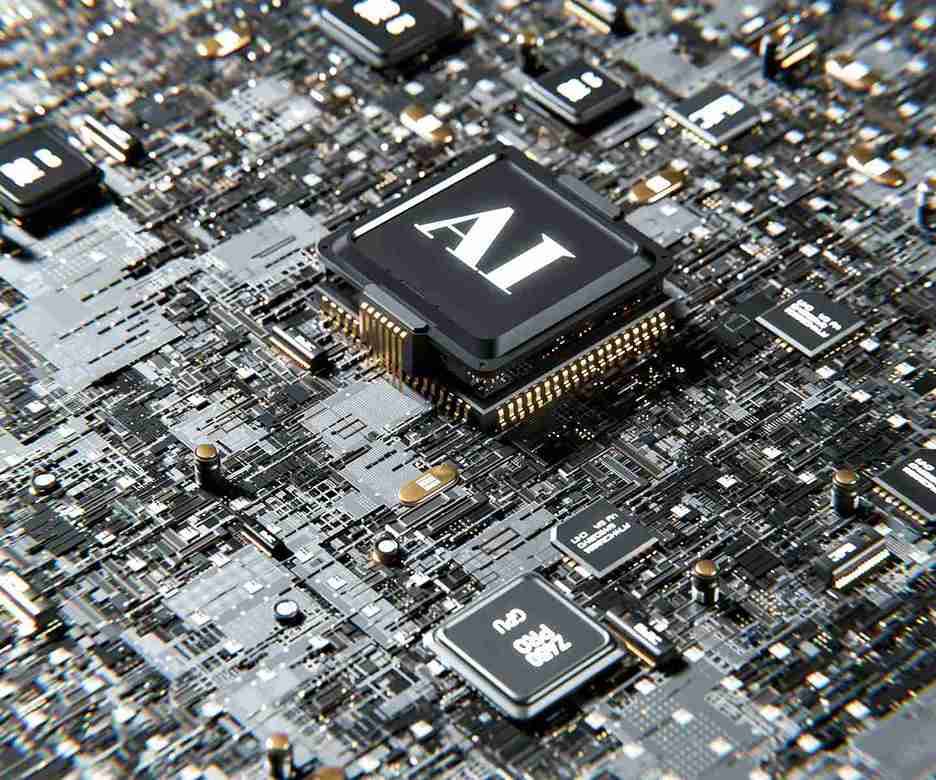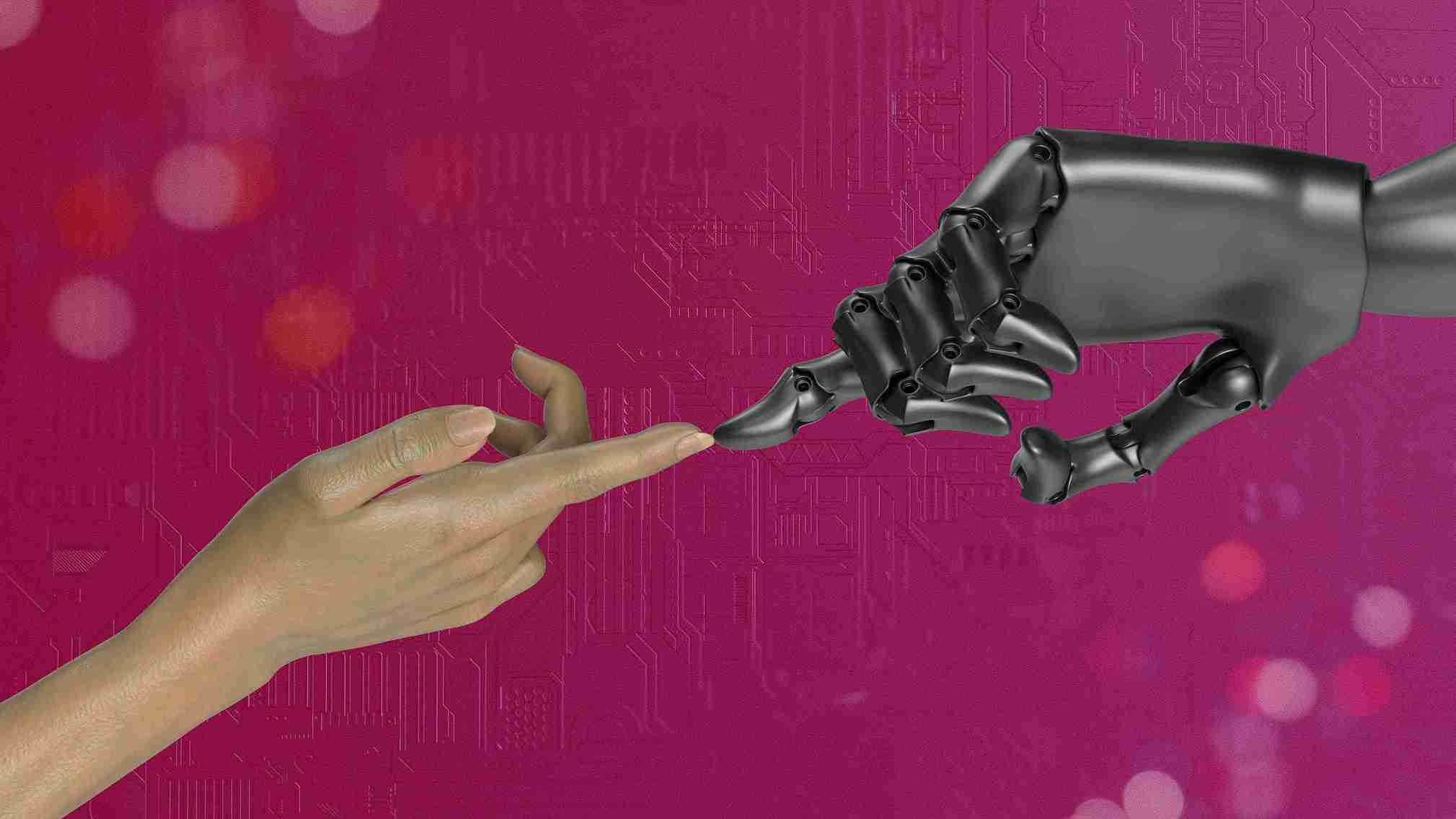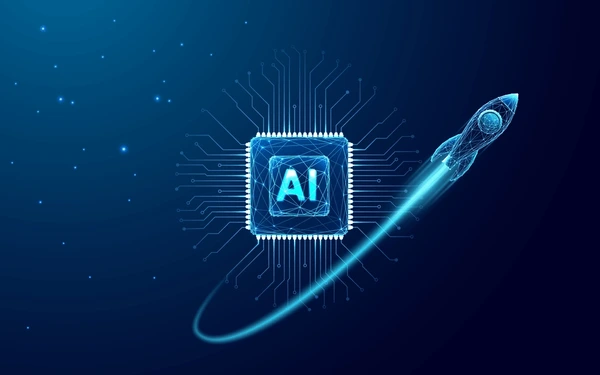Welcome to The New Age of AI—a time when artificial intelligence is no longer a futuristic concept but a real, impactful part of everyday life. From how we work and communicate to how we receive medical care or consume entertainment, AI has become a trusted ally in our digital age. What once seemed like science fiction is now our lived reality. The New Age of AI represents more than technological evolution—it marks a deep shift in how humans and machines interact, innovate, and co-exist. Let’s explore how this revolution is reshaping our world.
What Defines The New Age of AI?
In order to truly understand The New Age of AI, it’s important to grasp what differentiates this era from previous waves of innovation. It’s not simply about using machines to perform tasks—it’s about machines thinking, learning, and evolving with us.
Beyond Automation: Smart, Adaptive, and Personalized
In the past, automation was limited to rule-based systems, confined by programmed instructions. Now, AI systems can learn from data, recognize patterns, and make complex decisions without human intervention. This adaptability marks the beginning of The New Age of AI. Consider voice assistants like Alexa and Siri, or self-driving vehicles—these aren’t just responding to commands; they’re learning from interactions and adjusting behavior accordingly.
Moreover, AI’s personalization capabilities have reached new levels. Recommendation systems on platforms like Netflix, Amazon, and Spotify tailor experiences uniquely to each user, thanks to real-time learning and behavior analysis. The level of engagement we receive today would have been impossible just a decade ago.
From Narrow to General Capabilities
Previously, AI was “narrow,” excelling in isolated tasks like playing chess or filtering spam emails. Now, we are progressing toward Artificial General Intelligence (AGI)—systems capable of performing diverse tasks across various domains. This shift is foundational in The New Age of AI, where machines aren’t just tools but partners in innovation, communication, and decision-making.
We’re beginning to see models that can write essays, compose music, generate art, detect fraud, and conduct real-time translations—often simultaneously. This multidimensional intelligence blurs the line between human creativity and machine capability.
Real-World Applications in The New Age of AI
The most compelling evidence of The New Age of AI lies in its practical applications across industries. Let’s take a deeper look at how AI is transforming various sectors.
AI in Healthcare: Saving Lives with Precision
AI is revolutionizing healthcare delivery. From AI-assisted diagnostics to personalized treatment plans, the medical world is experiencing unprecedented precision and efficiency. Systems can now analyze X-rays and MRIs with accuracy rivaling human radiologists. Predictive analytics can alert doctors about possible patient deterioration even before symptoms become evident.
Additionally, robotic-assisted surgeries enhance precision, reduce recovery time, and improve outcomes. Virtual nurses provide 24/7 assistance to patients, and chatbots answer basic health queries. These innovations represent a new era in patient care, driven by The New Age of AI.
Education Reimagined with AI
AI is changing how we learn. Personalized learning platforms like Duolingo and Khan Academy adapt in real-time to student responses, helping them grasp difficult concepts at their own pace. AI tools also help educators by grading essays, monitoring classroom engagement, and identifying students who may need additional support.
In The New Age of AI, education becomes more customizable, inclusive, and effective—bridging gaps for underserved communities and students with special needs.
AI in Finance: From Fraud Detection to Robo-Advisors
Financial institutions rely on AI for everything from risk management to customer service. AI can detect fraudulent activity by analyzing unusual spending patterns in milliseconds. Robo-advisors like Betterment or Wealthfront analyze investor profiles and make automated financial recommendations based on real-time data.
This integration not only improves accuracy but also democratizes financial access, allowing more people to make informed investment decisions in The New Age of AI.
Smart Cities and AI-Powered Infrastructure
Urban centers are transforming into smart cities through AI-powered infrastructure. Traffic management systems now adjust signals based on congestion. AI monitors air and water quality, manages energy distribution, and streamlines waste collection.
In emergency scenarios, AI aids in disaster response by mapping danger zones and directing relief efforts. These advancements make cities more sustainable, efficient, and livable, proving the power of The New Age of AI in shaping modern society.
Ethical Challenges in The New Age of AI
While the benefits of AI are undeniable, it also introduces ethical concerns that need urgent attention. As technology advances, so must our commitment to responsible use.
Bias and Fairness
AI is only as good as the data it learns from. If the data is biased, the system will be biased too. This can lead to serious consequences, such as discriminatory hiring practices or unfair lending decisions. The New Age of AI demands transparency in how algorithms are developed and used.
Organizations are now working to create ethical AI frameworks that ensure fairness, especially in high-impact areas like criminal justice, employment, and healthcare.
Privacy in the AI Era
As AI systems become more sophisticated in tracking and predicting human behavior, the line between helpfulness and intrusion becomes blurred. Your smartphone knows your location, habits, even your voice tone. Data privacy is a growing concern in The New Age of AI, prompting new laws like GDPR and CCPA.
Ensuring that data collection is ethical, consensual, and secure is key to maintaining public trust.
AI and Job Displacement
A major fear is that AI will replace millions of jobs. And while this concern is valid, the full picture is more complex. Many traditional roles will indeed be automated, but new positions—such as AI trainers, data ethicists, and automation managers—will emerge.
Navigating this shift requires investment in reskilling, education, and workforce development, especially in regions and industries most at risk.
The Future Vision: What’s Coming Next?
Looking forward, The New Age of AI promises even more astonishing capabilities that could redefine life as we know it.
AI + Human Collaboration
Rather than replacing humans, AI is increasingly becoming a collaborative partner. In architecture, AI tools assist in creating sustainable designs. In journalism, AI suggests headlines or drafts content. This partnership enhances human creativity and productivity.
Collaboration will be central in The New Age of AI, where human intuition and machine precision intersect harmoniously.
Quantum AI and Superintelligence
The merging of quantum computing with AI could unleash the next level of machine intelligence. These systems will be able to process massive datasets at lightning speed, potentially unlocking cures for diseases or optimizing global supply chains.
This is both exciting and intimidating. Preparing for this next stage of The New Age of AI requires global cooperation and foresight.
Regulation and Responsible Innovation
To ensure technology benefits all, global policies and regulations must be developed. The EU’s AI Act, for instance, aims to set ethical standards. Governments must balance innovation with accountability to make sure The New Age of AI works for everyone.
AI in Creativity and Arts
Generative Art and Music
AI is also taking center stage in the creative world. Tools like DALL·E and Soundraw enable artists and musicians to co-create with algorithms. These systems generate images, soundscapes, and even film scripts based on user input.
Instead of replacing creators, AI expands their palette. In The New Age of AI, art is no longer limited by human imagination alone.
Storytelling and Content Generation
AI is revolutionizing storytelling. Tools help marketers, writers, and filmmakers generate scripts, plot outlines, and even entire articles. While some worry this dilutes creativity, many professionals find it enhances their work, freeing them to focus on higher-level ideation.
The Role of AI in Personal Life
Virtual Assistants and Smart Homes
From setting reminders to turning off lights, virtual assistants have become household companions. In The New Age of AI, homes are smarter—appliances can talk to each other, and energy use is optimized without human intervention.
This convenience and efficiency make daily routines smoother and more enjoyable.
Mental Health and Wellness
AI is increasingly used in the mental health space. Chatbots like Woebot provide emotional support, while apps analyze voice patterns to detect early signs of depression or anxiety.
Though not a replacement for therapy, these tools offer accessible support—especially in underserved areas or during crises.
Hype vs. Reality: Understanding the Limitations
Not All AI Is “Smart”
Despite media hype, many AI systems are still rule-based and limited. Not every chatbot understands nuance. Not every vision system can function reliably in real-world conditions.
Recognizing the limitations of today’s technology helps manage expectations and direct resources wisely within The New Age of AI.
The Need for Human Oversight
AI lacks emotion, empathy, and moral reasoning. That’s why human oversight remains critical, especially in sectors like medicine, law, and education. In The New Age of AI, technology should augment, not replace, human responsibility.
How Individuals Can Prepare for The New Age of AI
Lifelong Learning is Non-Negotiable
In a world driven by AI, continuous learning is vital. Skills in data science, critical thinking, ethics, and adaptability will be in high demand. Platforms like Coursera and edX offer accessible learning for everyone.
Investing in these areas ensures individuals remain competitive and confident in The New Age of AI.
Embracing Change Over Fear
Fear is natural when faced with change, but embracing transformation is empowering. Learn how to use AI tools, experiment with automation, and discover how they can help in your personal and professional life.
Opportunities in The New Age of AI belong to those who are ready to evolve.
Conclusion
The New Age of AI is no longer a distant vision—it’s a living, evolving reality. From transforming industries and education to enhancing personal life and creative expression, AI is deeply woven into the fabric of society.
However, with great power comes great responsibility. Ethical concerns, job disruptions, and privacy issues must be tackled head-on. By fostering transparent innovation and human-centered design, we can ensure AI serves humanity, not the other way around.
The road ahead is full of potential. The question is: how will we walk it? The New Age of AI invites us to be explorers, learners, and stewards of the future.




